Unlocking the Mystery: Why Is It Called Pickleball?
Introduction
Welcome to the captivating world of pickleball, a sport that, despite its recent surge in popularity, harbors a rich history and an intriguing name that piques the curiosity of many. This unique pastime, which seamlessly blends elements of tennis, badminton, and ping-pong, has transcended its origins to become a beloved activity across various demographics. From young enthusiasts to senior competitors, pickleball offers an inclusive and engaging experience that transcends age, skill level, and athletic prowess.
But beyond its appeal as a versatile and accessible sport lies a question that has intrigued players and spectators alike: why is it called pickleball? This peculiar name, unlike any other in the sports world, carries with it a tale as engaging and multifaceted as the game itself. The origins of pickleball, from its creation to its curious nomenclature, weave a story that is both entertaining and enlightening, offering a glimpse into the creativity and camaraderie that lie at the heart of this beloved game.
As we delve into the roots and evolution of pickleball, we aim to uncover not just the mechanics and rules that define the sport, but also the communal spirit and historical nuances that have shaped its development over the years. Join us as we embark on a journey to unravel the mysteries behind the origins of pickleball, tracing its path from a makeshift backyard game to an international sensation, and finally answering the burning question: why is it called pickleball? Through this exploration, we hope to illuminate the essence of pickleball, celebrating its unique place in the world of sports and its ability to bring people together in the spirit of fun and competition.
Why Is It Called Pickleball?
The name “pickleball” undoubtedly adds a layer of whimsy and curiosity to this rapidly growing sport. The origins of this unique moniker are shrouded in folklore, humor, and a bit of maritime history, offering a peek into the playful beginnings of the game.
The Pickles Myth
The most widely circulated story attributes the name to Pickles, the family dog of Joel Pritchard, one of the game’s co-founders. According to this charming tale, Pickles had a habit of chasing after the ball during the game and running off with it, thereby lending his name to the newly invented sport. This narrative has been embraced by many in the pickleball community, symbolizing the game’s fun-loving spirit and its accidental, yet serendipitous, creation.
The Pickle Boat Theory
An alternative theory suggests a less canine-centric origin. Joan Pritchard, Joel’s wife, mentioned that the game was named after the “pickle boat” in crew where oarsmen were chosen from the leftovers of other boats. Much like the pickle boat was a mixture of different rowers, pickleball itself is a blend of elements from tennis, badminton, and ping-pong. This explanation points to the inventive and inclusive nature of pickleball, highlighting its ability to unify diverse aspects into a cohesive and enjoyable game.
The Evolution of the Game
Pickleball has come a long way from its improvised beginnings on Bainbridge Island. Its evolution is marked by significant developments in rules, equipment, and organization, reflecting its growing popularity and the community’s commitment to refining and promoting the sport.
The Development of Rules
Initially, pickleball was played with makeshift equipment on a badminton-sized court with a lowered net. The rules were simple and designed to keep the game accessible and enjoyable for all players, regardless of age or skill level. Over time, these rules have been formalized and standardized, with specific guidelines for court dimensions, paddle and ball specifications, and scoring. However, the core principles of the game, such as the two-bounce rule and the non-volley zone (or “kitchen”), have remained consistent, preserving the original spirit of pickleball.
Institutionalization and Growth
The transition from a casual backyard activity to an organized sport was a pivotal moment in pickleball’s history. The establishment of the USA Pickleball Association (USAPA) in 1984 marked the beginning of a new era, with formalized rules, sanctioned tournaments, and a structured framework for promoting the sport. This institutional support played a crucial role in expanding pickleball’s reach, leading to a surge in popularity across the United States and eventually around the world.
Today, pickleball is recognized as one of the fastest-growing sports in the U.S., with a dedicated following that spans generations and continents. Its appeal lies not only in its fun and accessible gameplay but also in its ability to foster community and connection among players. From local parks to international competitions, pickleball continues to bring people together, proving that a game born out of improvisation and a quirky name can evolve into a beloved global phenomenon.
The Cultural Impact of Pickleball
Pickleball’s ascent from a makeshift family game to an international sporting phenomenon has had a profound impact on communities, health and wellness, and educational settings. Its unique blend of accessibility, social interaction, and competitive play has made it more than just a game; it’s a tool for building connections and fostering well-being across a wide spectrum of the population.
Community Building and Social Activities
One of the most significant impacts of pickleball is its power to bring people together. The sport’s inclusive nature encourages participants from diverse backgrounds, skill levels, and ages to engage in play, making it a popular activity at local community centers, parks, and recreational leagues. Pickleball courts have become hubs of social interaction, where friendships are formed, and communities are strengthened. The game’s structure, which often involves doubles play, promotes teamwork and communication, reinforcing the social bonds that are essential to cohesive communities.
Impact on Older Adults
Pickleball has gained particular acclaim for its benefits to older adults, offering a form of exercise that is both accessible and engaging. The game’s lower impact on joints, combined with the mental agility required to play, makes it an ideal activity for seniors seeking to maintain their physical health and cognitive functions. Moreover, the social aspect of pickleball provides valuable opportunities for social engagement, combating loneliness and promoting a sense of belonging among older populations.
Educational Settings and Youth Programs
The integration of pickleball into educational settings and youth sports programs highlights its versatility and educational value. Schools are adopting pickleball in physical education curriculums, utilizing the game to teach students about teamwork, hand-eye coordination, and healthy lifestyle habits. Similarly, youth sports programs leverage pickleball’s fun and accessible nature to introduce children to the principles of racquet sports, offering a foundation for physical activity that can last a lifetime.
Key Milestones in Pickleball History
Pickleball’s journey from its whimsical origins to becoming a globally recognized sport is marked by key milestones that reflect its growth and the dedication of its community.
Timeline of Significant Events
- 1965: The invention of pickleball by Joel Pritchard, Bill Bell, and Barney McCallum on Bainbridge Island, Washington.
- 1972: The creation of the first permanent pickleball court, signaling the sport’s move beyond the backyard.
- 1984: Establishment of the USA Pickleball Association (USAPA), providing a formal governance structure for the sport.
- 2009: Pickleball is included in the National Senior Games, highlighting its popularity among older adults.
- 2010s: Rapid expansion of pickleball, with courts appearing across the United States and in several other countries.
- 2020: The sport continues to grow, with the International Federation of Pickleball (IFP) reporting membership from over 40 countries.
Notable Figures in the Sport
- Joel Pritchard, Bill Bell, and Barney McCallum: The co-founders of pickleball, whose innovation and creativity gave birth to the sport.
- Joan Pritchard: Credited with naming pickleball, her contributions underscore the family-oriented origins of the game.
- Barney McCallum: Played a crucial role in the early development and promotion of pickleball, including the creation of the first commercial paddle.
These milestones and figures highlight the evolution of pickleball from a humble pastime to a sport cherished by millions. Its cultural impact, from community building to promoting health and education, alongside the key moments and people that have shaped its history, underscore pickleball’s enduring appeal and growing legacy.
The Future of Pickleball
As pickleball continues its trajectory from a backyard invention to a staple of international sporting communities, its future looks brighter than ever. This growth is not just in the numbers of courts and players but also in how the sport is innovating and adapting to new trends and technologies.
Adapting to the Digital Age
Pickleball’s adaptation to the digital age is evident through online communities, digital coaching platforms, and live-streamed tournaments, making the sport more accessible and engaging for a global audience. Social media plays a pivotal role in this evolution, with players sharing tips, highlights, and connecting with the broader pickleball community worldwide. Moreover, apps for finding local games, improving skills, or even virtual reality pickleball games are beginning to emerge, enhancing the sport’s appeal to younger generations and tech-savvy enthusiasts.
Innovations in Equipment and Training
The sport’s equipment has seen significant advancements, with paddles and balls being engineered for better performance and durability. Composite materials, aerodynamic designs, and specialized grips are just a few innovations making the game more competitive and enjoyable. Similarly, court construction technology has advanced, with materials that offer better bounce, durability, and weather resistance, making pickleball more accessible in diverse environments.
In player training, we’re seeing a shift towards professionalization, with personalized coaching, performance analytics, and even biomechanical analysis becoming part of the sport. These resources not only help players improve their game but also understand and prevent injuries, contributing to the sport’s sustainability.
Predictions for Growth
The future of pickleball includes not only an increase in its player base but also its recognition as a competitive sport globally. With discussions around inclusion in major multi-sport events and the establishment of professional leagues, pickleball is poised to become a staple of the international sports community. Its growth is likely to have a profound impact on future generations, introducing them to a sport that values community, inclusivity, and lifelong participation.
Conclusion
From its inception on Bainbridge Island to becoming a beloved international pastime, pickleball’s journey is a testament to the power of innovation, community, and the joy of play. Understanding its origins—not just the whimsical name but the spirit of inclusivity and creativity that defined its creation—adds depth to our appreciation of the game.
Pickleball is more than just a sport; it’s a community, a source of health and happiness, and a bridge across generations. As we look to the future, the game’s principles of inclusivity, health, and community are likely to resonate even more strongly, inviting everyone to be part of this continuing story.
Whether you’re a seasoned player or someone just learning about pickleball, there’s never been a better time to get involved. We encourage you to pick up a paddle, join a local game, or simply learn more about the sport’s fascinating history and vibrant community. The world of pickleball is waiting for you, ready to welcome you into a game that’s about much more than just hitting a ball—it’s about making connections, staying active, and most of all, having fun.
Further Reading and Resources
For those captivated by the story of pickleball and eager to delve deeper into its history, culture, and community, a wealth of resources awaits. From enlightening books and documentaries to informative websites, there’s no shortage of material to enhance your understanding and appreciation of this dynamic sport. Additionally, joining a local pickleball club can be a fantastic way to immerse yourself in the game and connect with fellow enthusiasts.
Books
- “History of Pickleball: More Than 50 Years of Fun!” by Jennifer Lucore and Beverly Youngren: This comprehensive book offers an in-depth look at pickleball’s origins, evolution, and its pioneers. Packed with anecdotes, historical insights, and photographs, it’s an essential read for anyone interested in the sport’s rich history.
- “Pickleball Fundamentals” by USA Pickleball Association (USAPA): Ideal for beginners and seasoned players alike, this guide covers the essentials of the game, from rules and strategies to tips for improvement.
Documentaries and Videos
- “The Pickleball Chronicles”: This series of short documentaries available on various streaming platforms explores different aspects of pickleball, including its history, growth, and the diverse community that supports it.
- YouTube Channels: Numerous channels are dedicated to pickleball, offering tutorials, match highlights, and interviews with top players. Channels like “Pickleball Channel” and “PrimeTime Pickleball” are great places to start.
Websites
- USA Pickleball Association (USAPA) Website: usapickleball.org: The official site for pickleball in the United States, offering resources on rules, equipment, and finding places to play.
- Pickleball Portal: pickleballportal.com: This site provides gear reviews, playing tips, and guides for players of all levels.
- Pickleball Central: pickleballcentral.com: Beyond being a retailer for equipment, Pickleball Central hosts a wealth of informational content, including articles and resources on how to improve your game.
Local Clubs and Getting Involved
Getting involved in pickleball locally can enhance your playing experience and connect you with a community of like-minded individuals. Here’s how to find local clubs and communities:
- Check the USAPA’s Places to Play Database: The USAPA website features a searchable database of places to play pickleball across the United States, including local clubs and community centers.
- Social Media and Meetup Groups: Facebook, Meetup.com, and other social platforms often have groups dedicated to pickleball players in specific areas. These can be great resources for finding local games, events, and fellow pickleball enthusiasts.
- Local Community Centers and Parks: Many community centers, parks, and recreational facilities now offer pickleball courts and programs. Contacting these centers directly can provide information on how to join a club, participate in open play sessions, or enroll in instructional clinics.
Whether you’re a newcomer to the sport or a seasoned player looking to deepen your engagement with the pickleball community, these resources offer a gateway to a richer understanding and enjoyment of the game. So grab a paddle, hit the court, and become part of the ever-growing pickleball phenomenon.
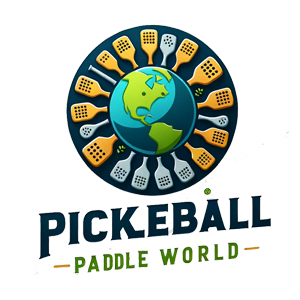
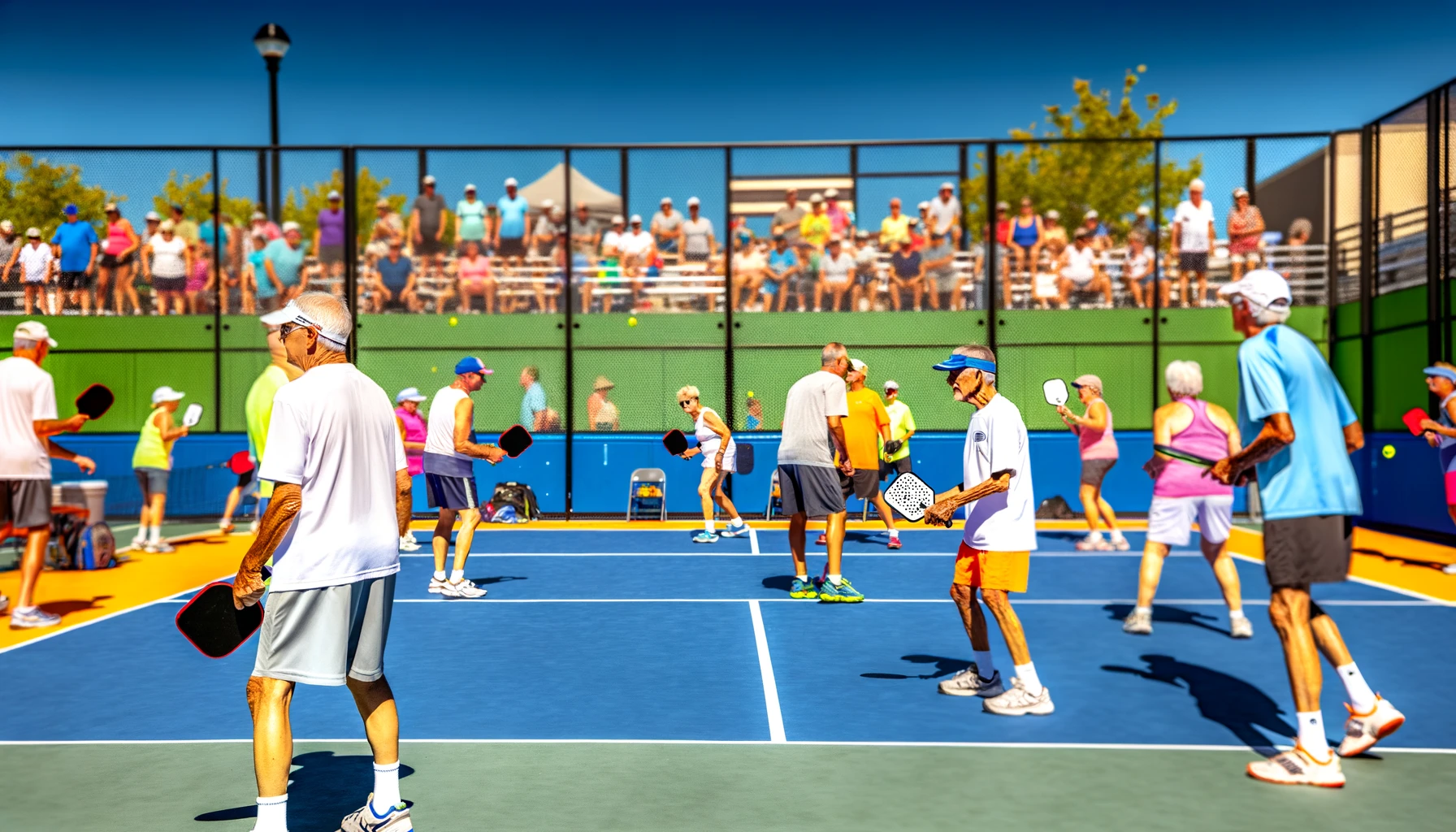
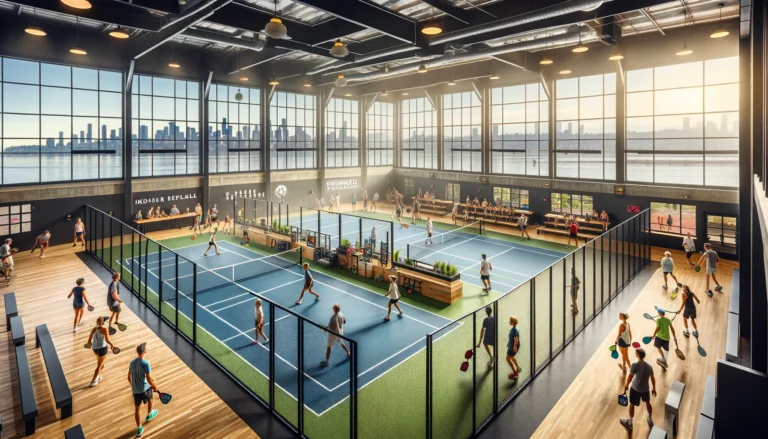
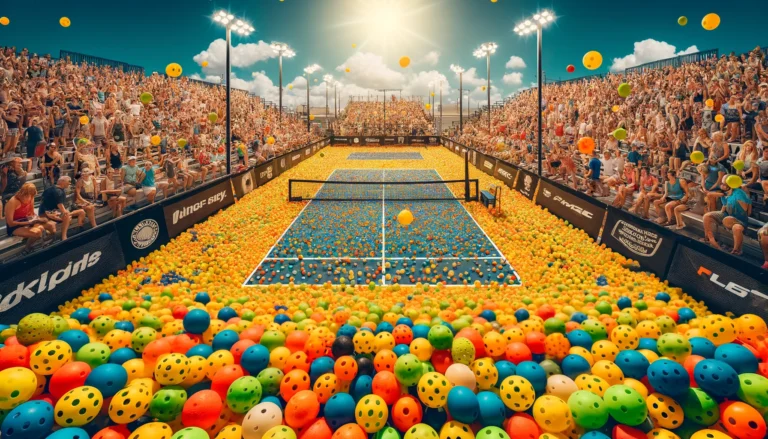
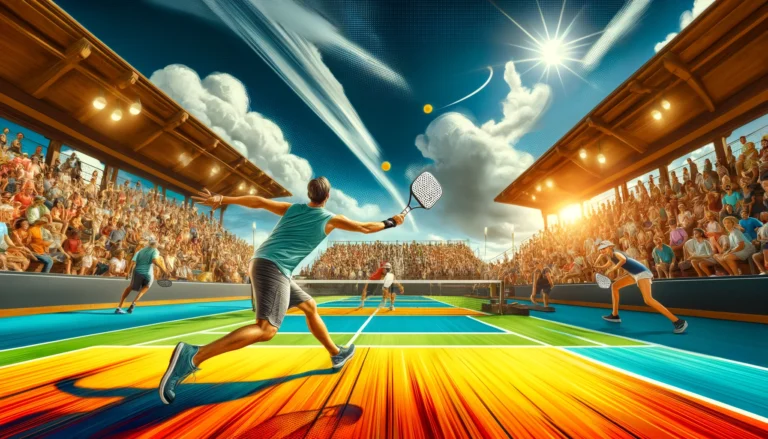
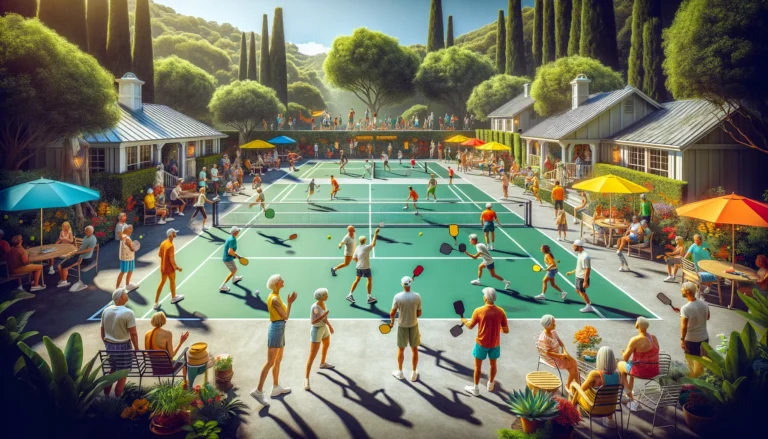
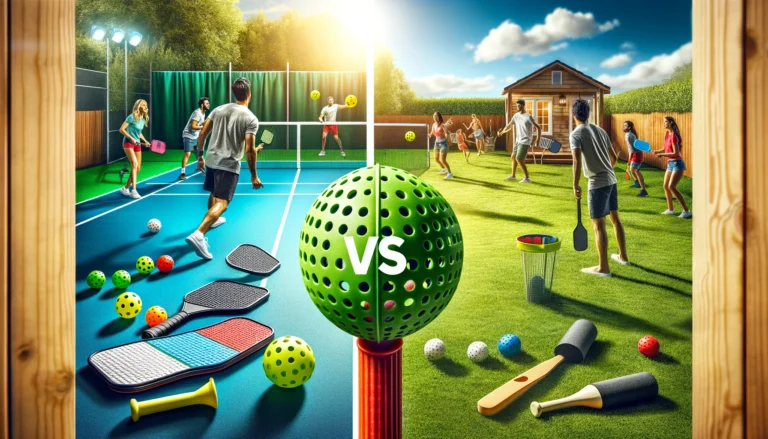
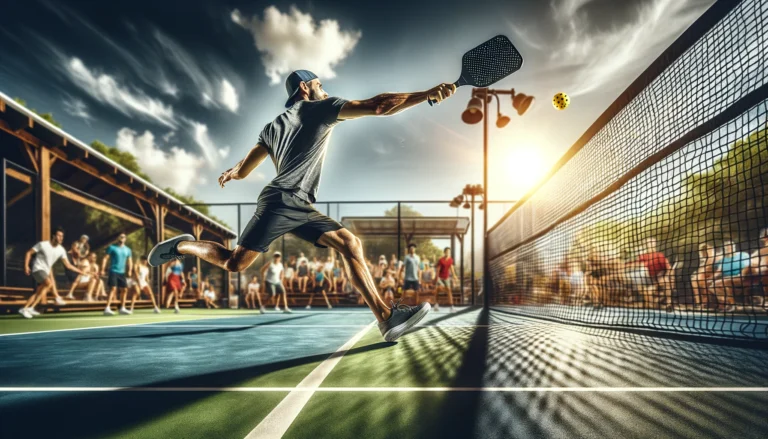
One Comment